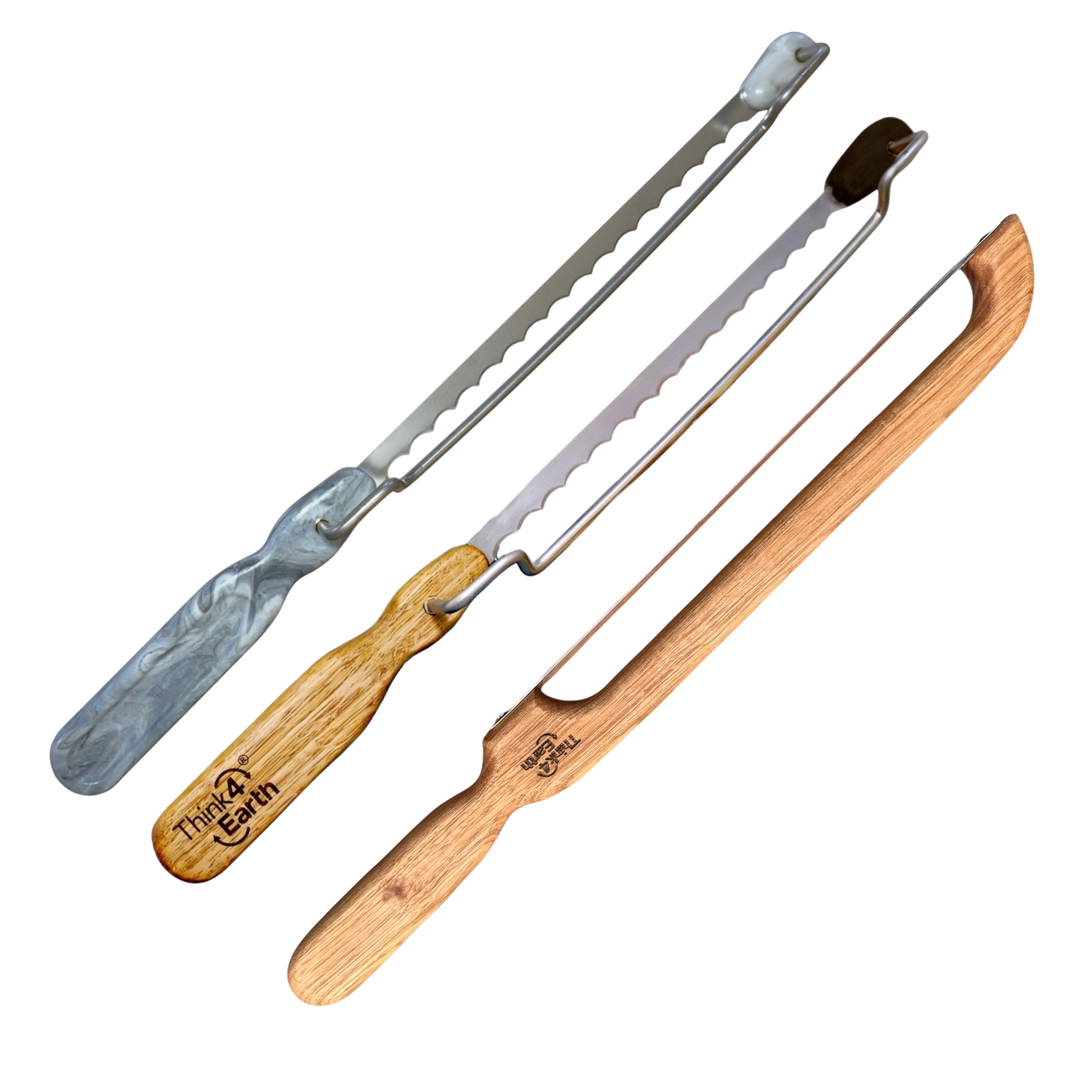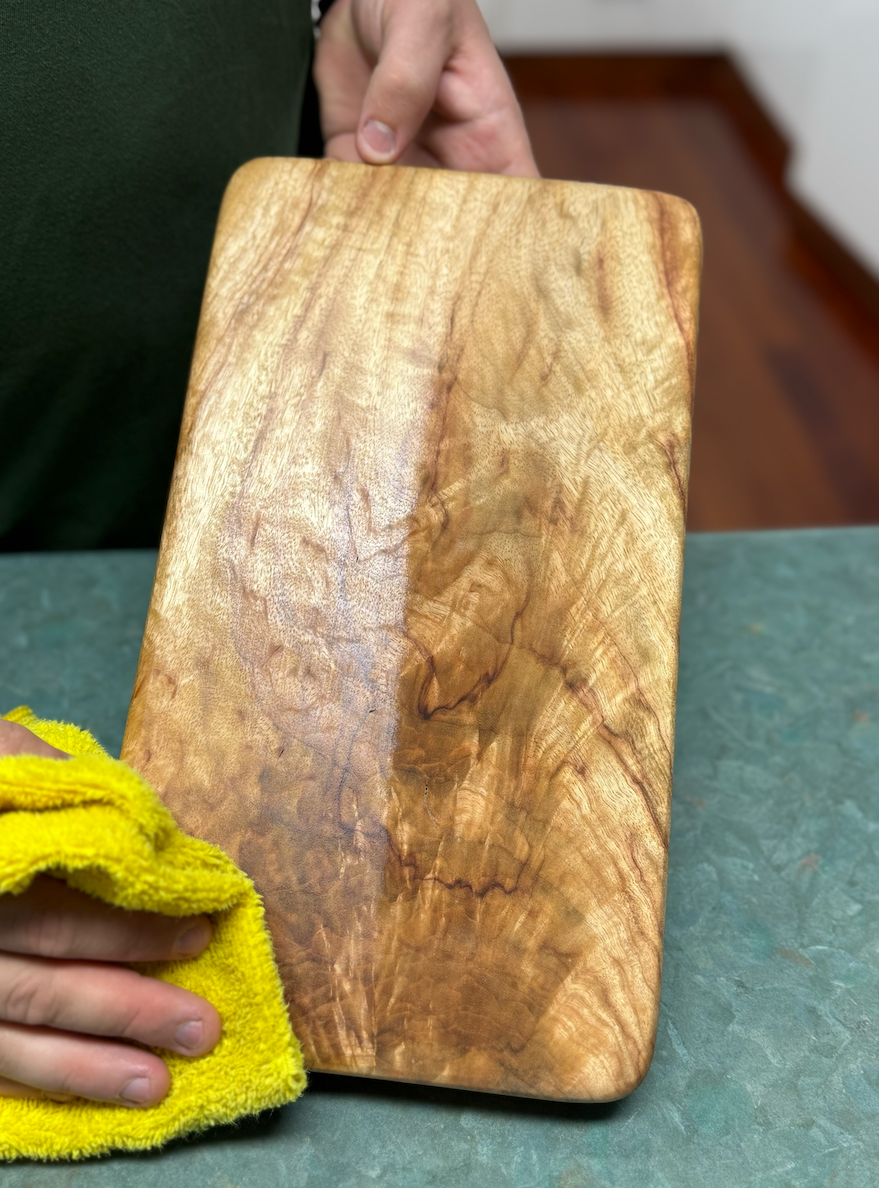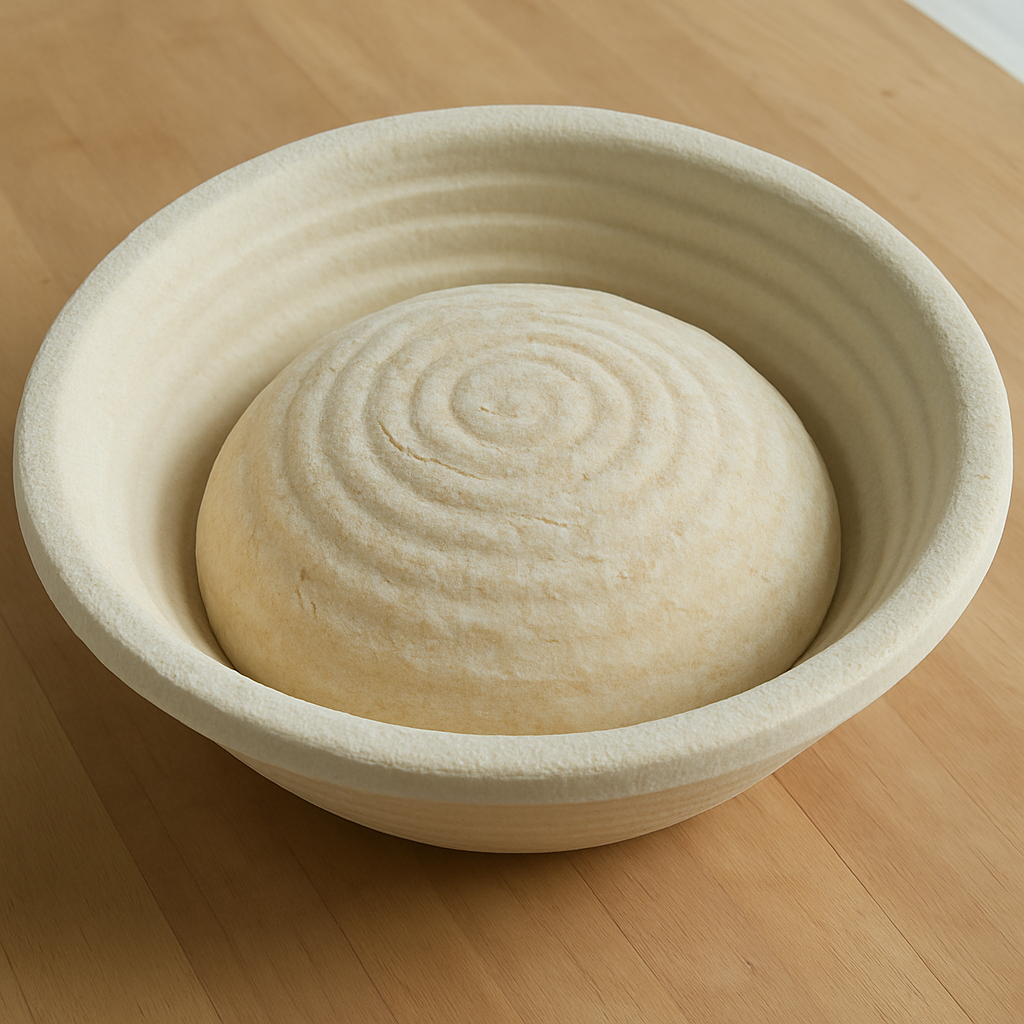How to Use, Clean, and Care for a Bread Saw (Fixed & Adjustable | Wood & Recycled Plastic)
Whether you’re slicing crusty sourdough or sandwich loaves, a bread saw can transform your baking experience. At Think4Earth, our handcrafted bread saws are designed to deliver perfect slices every time with sustainability, performance, and longevity in mind.
But like all quality tools, a little care goes a long way. Here’s how to use your bread saw correctly and keep it in top condition for years to come.
What Is a Bread Saw, and How Do You Use It?
Unlike a traditional bread knife, a bread saw uses a thin, ultra-sharp blade and a sawing motion just like a woodworking tool to glide effortlessly through both crusty and soft loaves.
At Think4Earth, we offer two types:
- Fixed Bread Saw – A solid, reliable option perfect for those who prefer simplicity.
- Adjustable Bread Saw – Lets you set your slice thickness for consistent, beautiful cuts every time.
To use:
- Place your loaf on a firm surface or a bread board.
- Grip your bread saw handle firmly (HDPE or Tasmanian Oak – both designed for comfort).
- Saw back and forth gently, letting the blade do the work no pressing down!
- For the adjustable model, set your desired thickness before slicing.

How to Clean Your Bread Saw
Never soak or put your bread saw in the dishwasher if it has a timber handle, as this can damage both the handle and the blade.
Instead, for all bread saws:
- Wipe with a damp cloth after each use
- Use mild dish soap if needed, then dry immediately
- For stubborn crumbs stuck in the teeth, use a soft brush
HDPE Bread Saws (Recycled Plastic Handles):
These are top-shelf dishwasher safe, thanks to their water-resistant and durable nature. However, we generally recommend handwashing a quick wipe with a damp cloth and drying the blade is usually more than enough to keep it clean and in top condition.
Tasmanian Oak Bread Saws (Timber Handles):
To keep the handle looking its best, reapply a food-safe oil like Gilly’s Pure Tung Oil every few months. This helps maintain the timber’s hydration, prevent cracking, and retain its natural sheen.

Caring for Your Bread Saw Long-Term
For Tasmanian Oak Saws:
- Re-oil the handle every 2–3 months.
- Store in a dry place away from direct sunlight.
- Avoid using it on overly wet or underbaked bread to prevent excess resistance.
For HDPE Saws (Made from Recycled Plastic):
- Simply wipe clean and store dry.
- The recycled material is incredibly durable, food-safe, and requires no oiling.
🌿 Choose the Right Saw for You
|
Saw Type |
Material |
Best For |
|
Fixed |
Tasmanian Oak |
Daily use, timeless style, rustic charm |
|
Fixed |
HDPE (Recycled Bottle Tops) |
Eco-conscious customers, colour options, easy maintenance |
|
Adjustable |
Tasmanian Oak or HDPE |
Perfect slice control, food styling, sharing loaves |
Want to compare the two? Shop Bread Saws Here
Final Thought
Your Think4Earth bread saw is more than a tool it’s a step toward better baking, smarter sustainability, and thoughtful design. With just a few simple habits, you can keep it performing beautifully for years.
Ready to elevate your bread game?
Explore our full collection of handcrafted, sustainable bread tools and accessories here

FAQ
1. Can I wash my bread saw in the dishwasher?
It depends on the type of handle:
- Tasmanian Oak bread saws: No, these must be hand washed only. The dishwasher can damage the timber and blade. Wipe clean with a damp cloth and dry immediately.
- HDPE (recycled plastic) bread saws: These are top-shelf dishwasher safe, but we recommend hand washing where possible. A simple wipe with a damp cloth is usually sufficient and helps extend the saw’s lifespan.
2. What’s the difference between the adjustable and fixed bread saws?
The adjustable bread saw lets you choose your slice thickness, ideal for precise or uniform slicing (great for toast or entertaining). The fixed bread saw is a single, solid frame that’s quicker to grab and go, set to a toast thickness but with the ability to cut thinner.
3. Do I need to oil my HDPE (plastic) bread saw?
No, HDPE models require no oiling or special maintenance. They’re made from recycled plastic bottle tops and are naturally durable, water-resistant, and easy to clean.
4. How do I oil the Tasmanian Oak bread saw handle?
Use a small amount of pure Tung Oil or food-safe mineral oil. Apply with a cloth, let it soak for a few hours or overnight, then wipe away excess. Re-oil every 2–3 months to maintain its natural finish.







